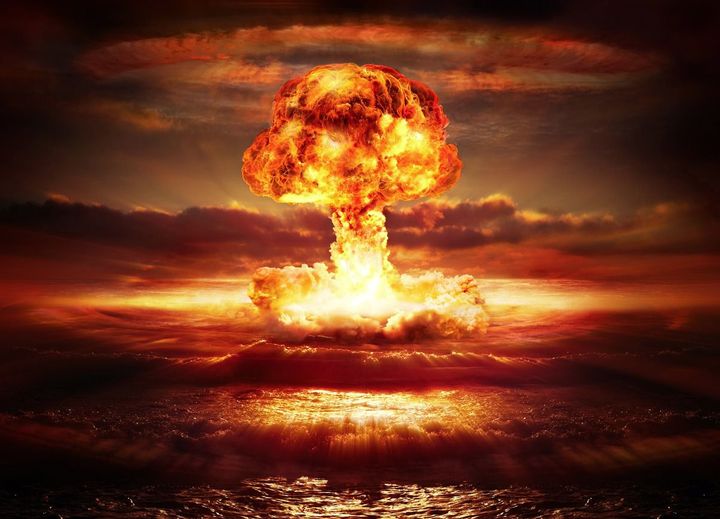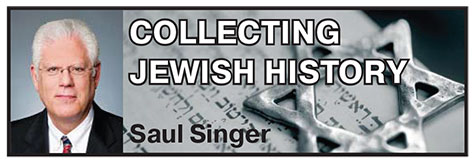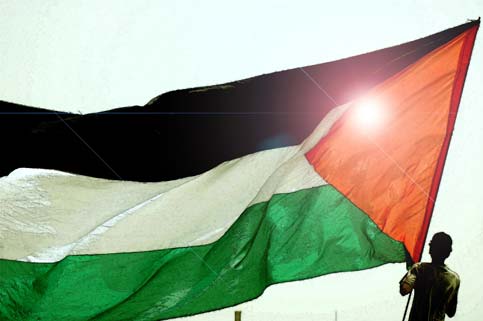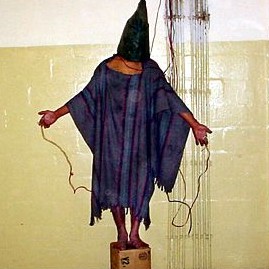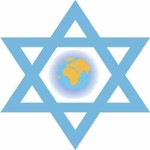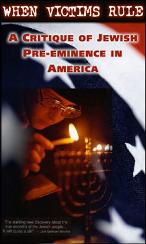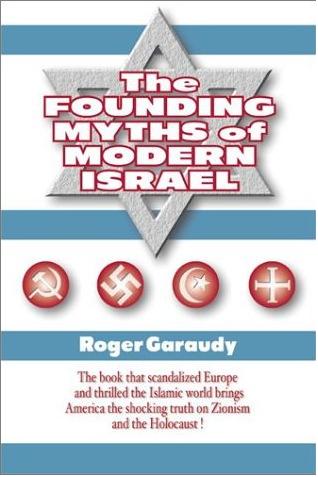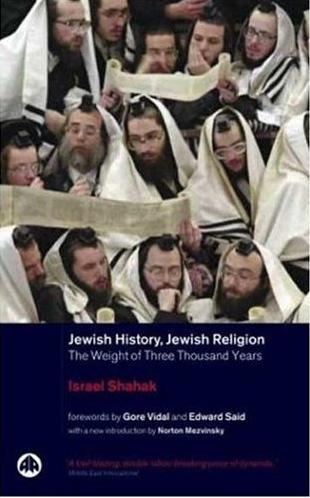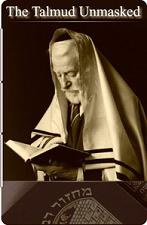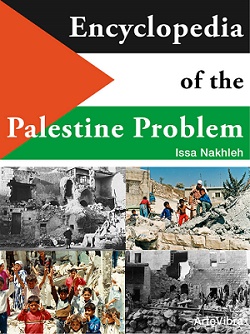The Jews behind the Atomic Bomb
A collection of revealing articles from the Jewish Press
- August 6: “The Jewish Bomb” - Jewish Currents
- The Secret Jewish History Of The Atom Bomb - The Forward
- The Jew Who Bombed Both Hiroshima And Nagasaki - JewishPress.com
- 75 years post-Hiroshima, Jewish ‘mother of the bomb’ inspires spy thriller novel - The Times of Israel
Reading this, you don't really se any remorse or guilt on behalf of the Jewish authors. Rather in three of them the tone is more that of boasting of the achievements of their Jewish co-tribalists. To be remembered!
August 6: “The Jewish Bomb”
By Lawrence Bush
Jewish Currents, August 6, 2011
The first nuclear attack in history took place on this date in 1945 when the city of Hiroshima was largely destroyed by a single bomb dropped by an American B-29. Three days later, the city of Nagasaki was similarly destroyed, and Japan surrendered six days after that, ending World War II. The nuclear bomb was the product of an intensive development campaign in which Jews were prominently involved: Albert Einstein, Leo Szilard and Eugene Wigner, three Jewish refugees from Nazism, had co-signed an August 2, 1939 letter to President Roosevelt warning of the consequences if Germany developed an atomic bomb; J. Robert Oppenheimer, David Bohm, Rudolf Peierls, Otto Frisch Felix Bloch, Niels Bohr, Otto Hahn, and Edward Teller (as well as Wigner and Szilard) — many of whom were refugees from Nazism — were key leaders among the 6,000 scientists who worked on the Manhattan Project to develop the American bomb. After the war, a number of these scientists became leading advocates of disarmament and/or international control of nuclear weapons.
"When I asked General MacArthur about the decision to drop the bomb, I was surprised to learn he had not even been consulted. What, I asked, would his advice have been? He replied that he saw no military justification for the dropping of the bomb. The war might have ended weeks earlier, he said, if the United States had agreed, as it later did anyway, to the retention of the institution of the emperor."
-- Norman Cousins, The Pathology of Power
For a catalogue of other surprising statements of opposition to the Hiroshima bombing, click here.
The Secret Jewish History Of The Atom BombBy Matthew Gindin
The Forward (Scribe), April 21, 2017
Lately, I’ve had nukes on the mind.I began reading a Kurt Vonnegut novel this week because I think we are now living in one, and I need to plot strategy.
All of this was exacerbated Monday afternoon when a senior North Korean official said that the U.S had created “a dangerous situation in which thermonuclear war may break out at any minute.” Later North Korea said it would continue “weekly” missile tests and warned the US that any American plans to attack it would be met with a pre-emptive nuclear strike with “our own style and method.”
So it goes.
As is well known, several Jews were essential to the development of Nuclear weapons. The intellectual father of the bomb was Leo Szilard, a Hungarian-Jewish refugee from Nazism. Szilard conceived the nuclear chain reaction in 1933, and patented the idea of a nuclear reactor with Enrico Fermi, a physicist who had fled Mussolini’s Italy to save his Jewish wife Laura Capon.
In December 1938, Otto Hahn and Fritz Strassmann sent a manuscript to Naturwissenschaften reporting that they had detected the element barium after bombarding uranium with neutrons. Here too Jewish and anti-Nazi connections abound: Hahn was a vocal opponent of Nazism (praised by Einstein as “”one of the very few who stood upright and did the best he could in these years of evil”) and Strassman hid Jews during the war.
Lise Meitner and her nephew Otto Frisch correctly interpreted Hahn and Strassman’s results as being due to the splitting of the uranium atom. Meitner was a Viennese Jew, and her Austrian nephew Frisch was Jewish as well. Frisch then collaborated with Rudolf Peierls to designed the first theoretical mechanism for the detonation of an atomic bomb in 1940. Peierls was a Jewish refugee from Germany who worked on the Manhattan Project under its team director, J. Robert Oppenheimer, who was a Jew born in New York.
And so on.
In the February 1940 Frisch–Peierls memorandum they stated that: “The energy liberated in the explosion of such a super-bomb…will, for an instant, produce a temperature comparable to that of the interior of the sun. The blast from such an explosion would destroy life in a wide area. The size of this area is difficult to estimate, but it will probably cover the center of a big city.”
In August 1939, concerned that Germany might have its own project to develop fission-based weapons, Szilard had sent a letter, signed as well by Einstein, to Roosevelt warning him of the threat of a Nazi bomb. Roosevelt responded by setting up the Uranium Committee. It was not until the Japanese attack on Pearl Harbor in December 1941 that the U.S. decided to seriously commit itself to the bomb.
As a Jew, it troubles me that there were so many Jews involved in the creation of the bomb, so many that it is tempting to view it as a Jewish weapon. More deeply true though, is the ironic, and even tragic reality that to a significant degree it was an anti-fascist weapon born to prevent mass murder and tyranny. In the deepest sense, the creation of nuclear weaponry is simply the product of the ever-escalating use of human technology for aggression and defense. Yet the specific cause of the bomb’s creation was the deadly dance between the Nazis and those who opposed them. Perhaps not surprisingly, Jewish scientists played a major role.
Since then nuclear weapons have been used twice, both times by the United States against Japan. On August 6, 1945, the U.S. Army detonated “Little Boy” over the Japanese city of Hiroshima; three days later, on August 9, they detonated “Fat Man” over the Japanese city of Nagasaki. The bombings resulted in the deaths of approximately 200,000 civilians and military personnel.
According to Paul Ham writing in Newsweek, on 25 October 1945, Truman met with Oppenheimer. The physicist wanted to persuade the president to support international controls on nuclear weapons. Truman was dismissive, gruffly insisted that the Russians, the major post-war threat, would never develop nuclear weapons. Oppenheimer said, “Mr. President, I feel I have blood on my hands.” Truman, who later referred to Oppenheimer as a “cry baby scientist,” ended the meeting and told the Secretary of State never to bring “that son of a bitch in this office ever again.”
As Ham points out, Oppenheimer was consumed not so much by remorse for the wartime deaths of the Japanese as for “the deaths of millions of individuals in some distant apocalypse”.
[...]
The Jew Who Bombed Both Hiroshima And Nagasaki
By Saul Jay Singer
Jewish Press, March 10, 2016
On the Lufthansa Airlines cover displayed with this column, Jacob Beser has handwritten a complete and definitive statement of his role in America’s nuclear action against Japan that ended World War II: “Jacob Beser, former 1st Lt. USAF, crew of Enola Gay 6 July 45 (Hiroshima), crew of Bock’s Car 9 Aug 45 (Nagasaki).”
Beser (1921-1992) was the only crewman to have flown on both atomic bombing missions over Japan that effectively ended the war and brought the world into the nuclear age. (There was a third bomb and that Beser was scheduled to fly a planned third mission over Nihama, but the operation became unnecessary when Japan surrendered.)
He served as the radar specialist aboard both the Enola Gay, when it dropped the “Little Boy” atomic bomb on Hiroshima on August 6, 1945, and aboard Bock’s Car, when “Fat Man” was dropped on Nagasaki three days later. The 24-year-old radar specialist, who had designed the “proximity fuse” (a critical trigger component for the bombs), was tasked with ensuring that the A-bombs exploded at an altitude that would create the greatest destruction (which, at Hiroshima, was 1,850 feet). He was also charged with broad responsibility for electronic counter-measures that would protect the bombs against the possibility that a radio broadcast could accidentally trigger the electronic fuses.
Though his grandparents had emigrated from Germany almost a century earlier – his grandfather fought with the Union army during the Civil War and his father fought against his own Jewish cousins while serving with the American Expeditionary force against the Germans in World War I – Beser still had close relatives in Germany and France who were victimized by the Nazis. When the British entered World War II, he wanted to join the Royal Air Force to “kill some Nazis” but respected his parents’ wishes that he remain at Johns Hopkins University to complete his mechanical engineering degree. However, the day after the Japanese attack on Pearl Harbor, he overcame parental opposition and dropped out to out to enlist in the U.S. Air Force.
Beser became one of the service’s highest-rated radar officers at a time when radar technology was new and growing in importance and, because of his training and educational background, he was sent to Los Alamos, where he worked on the Manhattan Project with Bohr and Fermi in the area of weapons firing and fusing. Ironically, shortly before being assigned to his historic mission, he had requested a transfer to a combat unit to avenge his relatives in Europe.
Even 70 years later, when many have become somewhat inured, maybe even a bit complacent, about the idea of atomic warfare it is spine-tingling to read Beser’s description of his experience at Hiroshima the moment the bomb dropped:
I wasn’t watching the radar screen. I had my own instrumentation I was concerned with. I saw the fuse come on after the bomb separated from the aircraft, fixed time delay of about 10 seconds, give it time to clear. I saw the fuse come on to get the whole thing rolling and then the thing disappeared. At the same time it disappeared there was this big flash which illuminated the inside of the airplane. I was busy analyzing the environment making sure there was nothing [unplanned] happening. I was looking for the presence of signals…. When I got to the window two, three minutes later, the cloud was already up there, the mushroom that you see. It was still boiling and changing colors and I looked out and couldn’t believe my eyes. It looked like – you get down here at Ocean City and you get about two feet out in the water and you start stirring up the sand and how it billows? Well, it was like the whole…ground was doing it. And I could see new fires breaking on the periphery all the time.To t
his day, President Truman’s use of the nuclear option remains a polarizing event, but Beser was always firmly convinced that it was the correct decision at the time in the face of the mass casualties expected in an invasion of Japan, and he makes a compelling argument for the propriety of America’s having used atomic weapons:
If someone is looking for an apology for the bombing of Hiroshima and Nagasaki, you won’t get it from me. I am proud of my role in missions that ended WWII…. My one regret is that the bomb was not available for the final subjugation of Germany. I think the German people earned the right to that honor more than the Japanese people did…. As far as our country was concerned, we were three years downstream in a war, going on four. The world had been at war, really, from the ’30s in China, continuously, and millions and millions of people had been killed. Add to that the deliberate killing that went on in Europe, [and] it’s kind of ludicrous to say well, geez, look at all those people that were instantly murdered.
In November of 1945 there was an invasion of Japan planned. Three million men were gonna be thrown against Japan. There were about three million Japanese digging in for the defense of their homeland, and there was a casualty potential of over a million people. That’s what was avoided. If you take the highest figures of casualties of both cities, say, 300,000 combined casualties in Hiroshima and Nagasaki, versus a million, I’m sorry to say, it’s a good tradeoff. It’s a very cold way to look at it, but it’s the only way to look at it…. The use of atomic bombs, despite revisionist objections, shortened the war and saved both American and Japanese lives.Nonetheless, Beser, also believing that the decision to defer the issue of postwar control of nuclear weapons was a serious mistake, supported the Nuclear Test Ban Treaty. Shown with this column is a rare item, a reproduction of the treaty signed “Jacob Beser, 1st Lt. USAF, Enola Gay & Bock’s Car.”
After World War II, Beser seriously considered serving in the Israeli air force and contributing to the founding of Israel. Upon his arrival at the army discharge base at the end of the war, he saw a recruitment table for the Haganah, which was seeking air crews to smuggle displaced Jews from Europe to Eretz Yisrael. Ultimately he decided to remain in America, where he worked for the Army Corps of Engineers in the construction of the Sandia National Laboratories in New Mexico, which were later used by the Atomic Energy Commission for weapons research.
He went on to become a research associate at the Johns Hopkins medical school, where he helped to develop a pump used to circulate blood during heart surgery. He worked for AAI Corp. (1951-56) before beginning his career at Westinghouse, and he retired from its Defense and Electronic Systems Center in Linthicum as deputy program manager and subcontracts manager of the defense meteorological satellite program.
Born in Jewish Baltimore, Beser, who characterized himself as “a religious person,” was very active in Jewish communal affairs throughout his life. He served on the board of the Jewish Family and Children’s Service; as president of the Hebrew Immigrant Aid Society of Baltimore of the Associated Jewish Charities; on the board of directors of the Baltimore Hebrew Congregation, the oldest established synagogue in Maryland; as commander of the Maccabean Post of the American Legion; and as an adult leader with the National Jewish Committee on Scouting, which awarded him its Shofar Award.
- Israeli paper Ha'aretz: A Jew insisted on the bombing of Nagasaki - which then was fulfilled
- Was Hiroshima Necessary?
By Mark Weber
- The Bombs of August
By Howard Zinn, (Progressive 08/2000)
- Remembering the US War Crime/Holocaust in Tokyo, March 9-10, 1945
By Michael Hoffman
- Skulls, Ears, Noses, And Other Morbid “Trophies” Americans Took From Dead Japanese In WWII

By Katie Serena, All That's Interesting, November 13, 2017.
- Back to our section on Revisionism
- Back to our section on Jewish-Israeli influence and Japan
|
Races? Only one Human race United We Stand, Divided We Fall |
 |
No time to waste. Act now! Tomorrow it will be too late |
|


























